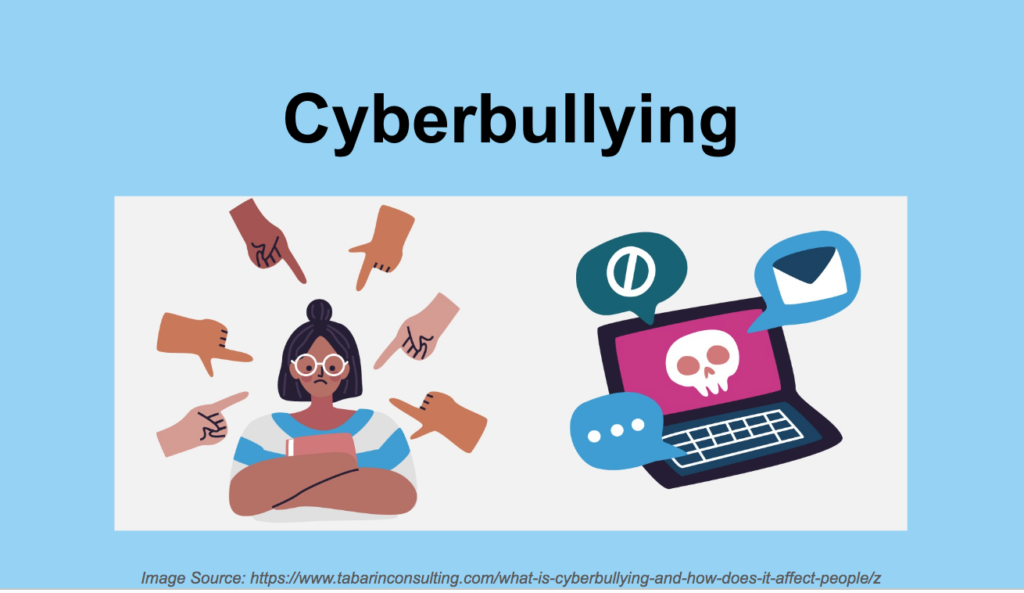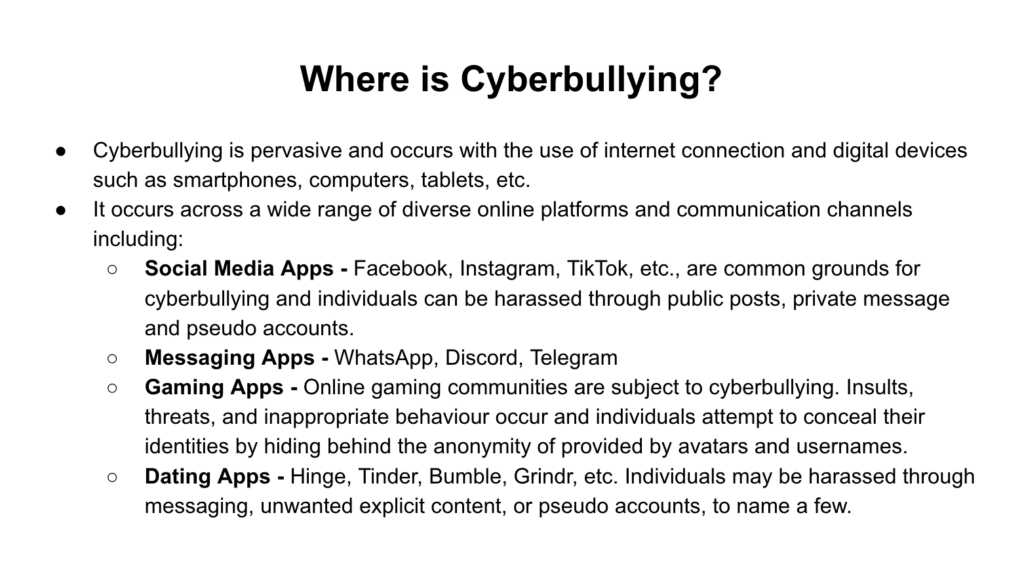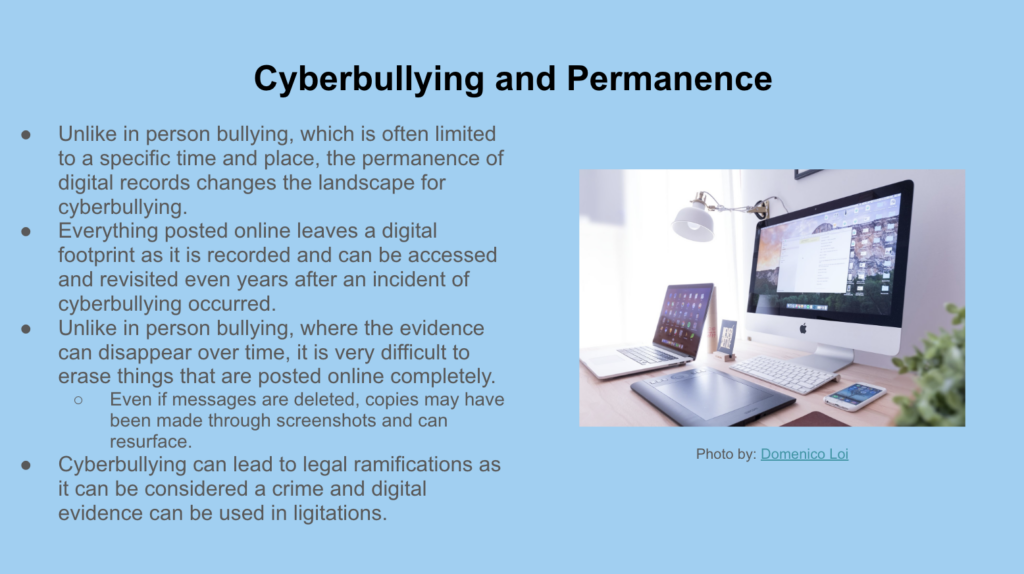Our group tackled the topic of cyber bullying. Our main inquiry questions were focused on the following:
What is it?
Where is it?
How can we prevent or mitigate it?
The topic of cyberbullying, and bullying in general is very relevant to teaching and learning as it directly impacts students’ well-being. Access to the internet is inevitable and platforms for social engagement where cyberbullying can thrive. It is everywhere at all times, making it difficult to control and monitor. As teachers, it is our responsibility and moral obligation to care for our students and their well-being, so intervening, raising awareness and providing support is crucial. Addressing this issue in education is essential to fostering a safe and supportive environment for students.
With cyberbullying comes many negative things. For instance, cyberbullying can lead to emotional distress, decreased self-esteem, poor mental health, higher absenteeism, and a variety of negative physical effects caused by stress in students. Ignoring or inadequately addressing cyberbullying can lead to a toxic learning space where students could have their academics and social interactions negatively impacted.
Tackling cyberbullying is an insurmountable task, but it must be done. Some ways in which cyberbullying can be mitigated are through raising awareness, such as with initiatives like Common Sense Education. In this, teacher can access pre-made lessons for all grade levels on how to tackle cyber bullying. Teacher can also encourage their schools to get involved in initiating anti-bullying campaigns and invite guest speakers to speak on the topic and reach a mass audience. Furthermore, teachers can help direct their students to counseling services. School counseling resources are an obvious first chpoice as the teacher has access to school faculty who can help students through tough times associated with cyberbullying. They can also direct students to online counseling platforms like Better Help and their sister site Teen Counseling, communicating with the students and their parents to find a solution to the bullying.
For the full presentation: please see the link here.

I personally contributed to the group presentation by performing research and creating the slides that detail the relationship between cyberbullying and permanence as well as where exactly cyberbully occurs. I think our group did a great job overall dividing the workload and I feel as though everyone contributed an equal amount to our presentation. The research I conducted for the project was a great refresher, especially having a new mindset and approaching the topic from the perspective of a teacher. The last time I really thought about cyberbullying was in high school and this was due to the fact that Facebook had recently emerged, and I was navigating a whole new world online that was new not only to me, but to everyone in my high school. As a result, there were several instances of cyberbullying that occurred and one that stands out particularly is this incident where a girl posted a homophobic comment on a boy’s photo and while she deleted the comment five minutes later, someone had taken a photo of the comment on a different device. The individual printed out copies of the homophobic comment and shared them around the school. This scenario perfectly highlights how everything posted online leaves a digital footprint and I want to ensure that my students have the proper knowledge and resources to know how to deal with cyberbully, as this was not something I was exposed to in high school. Given the expansion in digital technologies and social media, cyberbullying is an important topic that holds greater relevance in today’s society than ever before. As teachers, it is crucial that we educate our students on how to safely use the internet and social media platforms to help mitigate instances of cyberbullying.

